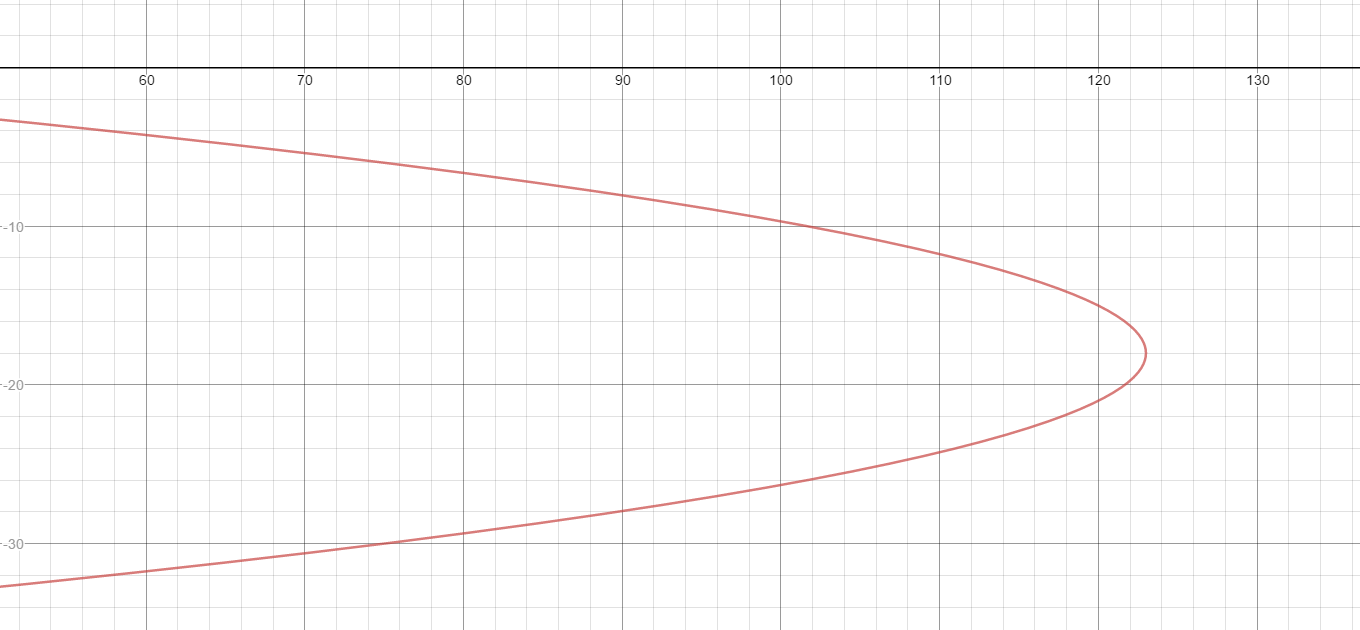How do you identify the vertex, focus, directrix and the length of the latus rectum and graph #x=-1/3y^2-12y+15#?
1 Answer
Please see the explanation.
Explanation:
Given:
To begin the conversion to the vertex form,
Remove a factor of
Set the middle term in the right side of the pattern
#-2ky = 36y
Substitute the left side of the pattern for the terms inside the ()s:
Substitute -18 for k:
Combine the constant terms:
The vertex is at
Use
Find the focus by adding
Focus:
The directrix is a vertical line the same distance in the opposite direction:
Let L = the length of the latus rectum
Here is the graph:

